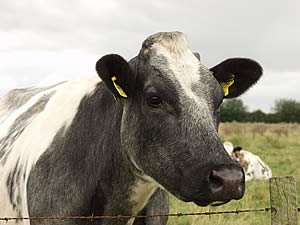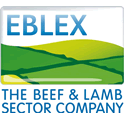 |
|||||||||
|
|||||||||||||||||||
|
|
Using
Initial OCDS Experience to Plan Ahead 30/01/07 English dairy and beef herds need to plan the disposal of their older animals increasingly carefully over the final two years of the Older Cattle Disposal Scheme (OCDS) if they are to avoid losing out from the progressive annual reduction in compensation levels.
Official figures show that a total of 107,000 animals born before August 1996 went through OCDS in 2006, following its introduction to replace the Over Thirty Month Scheme almost exactly 12 months ago (23 January 2006). This is markedly less than expected from original national estimates of surviving older cattle numbers. Throughputs proved stable over the first half of the year at between 1,000 and 1,500 animals per week. However, they rose to some 2,800 per week in the final quarter and peaked at 3,500 the week before Christmas as spring-calved cows were culled following weaning and producers sought to beat the New Year compensation rate fall. At the 2006 compensation rate of €360 per animal, RPA figures show OCDS disposals delivered an average of £240-250 per head, depending on the monthly euro exchange rate. From 1 January 2007, this value fell to under £220 per head as the compensation rate was reduced by the planned annual 10% to €324 per animal. What is more, at the current monthly exchange rate the value will fall to under £200 per head when the rate drops back to €292 per animal for the final 12 months of the scheme from 1 January 2008. Large numbers of animals born before August 1996 still on UK farms coupled with the likelihood of a similar surge in disposal demand ahead of the 2008 compensation rate fall and the strictly limited number of abattoirs licensed to operate OCDS means weekly demand may exceed slaughter capacity in late 2007. So pre-booking restrictions similar to the maximum of five animals per producer per day imposed from mid-November this year are almost inevitable. Under these circumstances, EBLEX advises producers to note the lessons of the first year of OCDS and plan the disposal of their older animals particularly carefully from now on. First and foremost, everyone should establish precisely how many older cattle remain in their herds, identify the individuals concerned and ensure the BCMS register is as complete as possible. They need to be aware that disposals in 2007 will generate significantly higher compensation levels than those in 2008. Equally, they would be well advised to spread disposals across the year to avoid falling foul of any end of 2007 excess of supply over scheme capacity that could force animals to be retained until 2008 and disposed of at the lower compensation rate. Cattle farmers wanting further information on any aspect of the Older Cattle Disposal Scheme should contact the Rural Payments Agency slaughter helpline on 0118 968 7333.
|
||||||||||||||||||

|
|
||||||||||||||||||
| home | agri-services | pedigree
pen | news | dairy | beef | machinery property | organisations | site map |
|||||||||||||||||||

